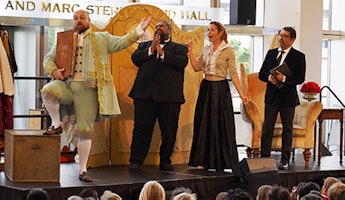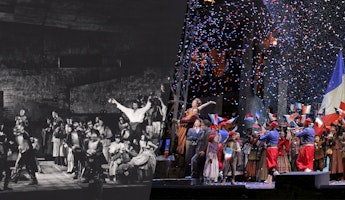Blog
August 7, 2025
A Place for Us: James Conlon on West Side Story
…Where civil blood makes civil hands unclean.
From forth the fatal loins of these two foes
A pair of star-crossed lovers take their life.
(Prologue, Romeo and Juliet, William Shakespeare)
An out and out plea for racial tolerance
(Leonard Bernstein, scribbled in his personal copy of Romeo and Juliet)
While they were in the field, Cain attacked his brother Abel and killed him.
(Genesis 4:8)
When Remus knew of the deceit, he was enraged, and…smitten, by Romulus himself…fell dead there.
(The Life of Romulus, 10.1, Plutarch)
In the strident, divided and divisive year of 2025, the perpetually recurring and moving drama of two young lovers, holding on to each other across an antagonistic cultural chasm, never loses its power to move us. Dressed in new garb, it lives on as West Side Story.
When did brothers first murder? Genesis and Plutarch tell us: Apparently since the very beginning. Why are they (we) still slaughtering each other? Shakespeare, along with the musical’s extraordinary artistic team of composer Leonard Bernstein, choreographer Jerome Robbins, playwright Arthur Laurents and lyricist Stephen Sondheim, pose that question with an object lesson of violence’s tragic consequences.
There are hundreds of works drawn from Shakespeare’s plays. Romeo and Juliet was to become a central myth-like theme for a large part of 19th-century (particularly Italian) opera. A young man and a young woman, desirous of being together, must survive obstacles in an environment that is unfriendly at best, dangerous at worst. The story is about those obstacles: if the loving couple succeeds it is a comedy, but if they don't it is a melodrama or tragedy. West Side Story is just one in a long series of stage works that, stripped down to their core, follow that formula.
Bernstein, musical giant of the second half of the 20th century, marked the world with his multifaceted genius. Conductor, composer, educator, media personality—all combined in one person. Had he merely excelled in just one of those areas, his legacy would have been ensured. But he could and did do it all, and his legacy remains powerful not only in the United States but all over the world, even now, 35 years after his passing.
As one who loves opera, loves Shakespeare and loves the music and titanic artistic personality of Leonard Bernstein, it is easy for me to sing the praises of this Broadway musical, destined to become a classic within half a century of its creation.
Does it belong in an opera house? I say yes, absolutely. Is it dated? On the surface yes in substance no, the way almost all classics are. Is the story’s geographic location essential? No more or less than other classics. Is it relevant today? Totally.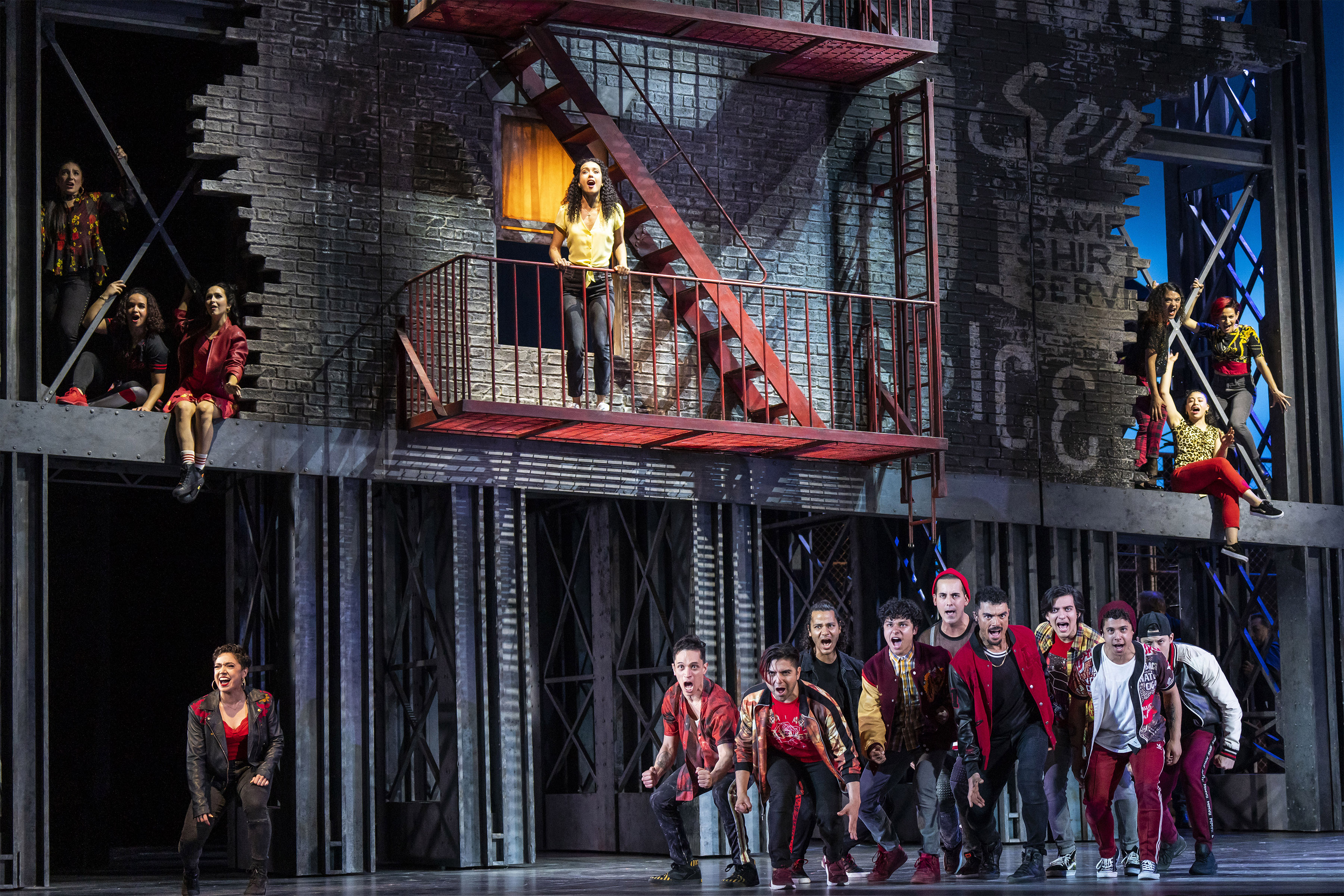
American musical theater—the Broadway musical—is a direct outgrowth of European operatic culture. Vocal virtuosity was always at the root of the art form, but it also developed around varying notions of theater and drama. In the 19th century, following leads from the previous century (Mozart in particular), contemporary tastes in opera produced a fork in the road that led to two parallel pathways.
Throughout the 17th and well into the 18th century, the dominant mode of operatic expression, the highest emotions and dramatic intensity were conveyed through virtuosic singing and an orchestra. This normal discourse was connected by lower intensity musical delivery of text that propelled the plot, called "recitative.” It's a hybrid of speaking on pitch and singing, text-driven, with simple harmonic accompaniment, totally secondary, normally played on a keyboard instrument, and on occasion, the orchestra.
But some members of the public, and consequently producers and composers, preferred to eliminate the recitative and instead offer spoken dialogue as the connective tissue. Thus an alternative developed, usually considered more “popular” offering spoken dialogues in the audience’s language instead of recitative. This form enjoyed less favor in Italy but flourished in the German-speaking countries and in France.
It was known as the opéra comique in France (Carmen, in its original form, is probably the greatest example) and the Singspiel in German-speaking countries, where its most famous examples are Mozart’s The Abduction from the Seraglio and The Magic Flute. Carl Maria von Weber’s Der Freischütz and Oberon are 19th-century examples (later referred to as Spieloper). This form would eventually transform into operetta, which became extremely popular, particularly in Vienna. The kings of Viennese operetta were Johann Strauss, Franz Lehár and Emmerich Kálmán, while Jacques Offenbach was the foremost operetta composer in Paris. The richly witty works of Gilbert and Sullivan thrived in England and all were successfully imported to the United States.
As the American musical theater developed, its roots can be clearly traced to operetta. Is there an inherent dissonance in performing a musical on an operatic stage that also presents Die Fledermaus, The Merry Widow, La Vie Parisienne, La Belle Hélène or Donizetti’s opéra comique The Daughter of the Regiment? In my estimation there is none. Therefore, why not West Side Story? Except for habit or preference, in Vienna you could (and still can) go to the Staatsoper or the Volksoper, in Paris the Palais Garnier or the Opéra Comique, and in old New York you could go to Broadway to see a musical, or stop in at 1411 Broadway, the address of the original (pre-Lincoln Center) Metropolitan Opera House.
Speaking of the Met, is there not a poignant irony in the fact that the neighborhood where the story of West Side Story takes place was razed and is now the site of Lincoln Center? In 1957, two years before the groundbreaking ceremony, West Side Story opened, first in Washington D.C. and subsequently in New York, where it ran for 732 performances. By the time the show closed, the demolition of the “old” neighborhood was underway. I can still remember the enormous holes in the ground that were to become the first Philharmonic Hall (1962), the New York State Theater (1964), the Library of the Performing Arts (1965) and the new Metropolitan Opera House (1966). Lincoln Center would transform the entire West Side of Manhattan, as was part of the intention of its planners.
But the character of the neighborhood that this new cultural center replaced, and its human drama, had already been captured and immortalized through this extraordinary theatrical masterpiece.
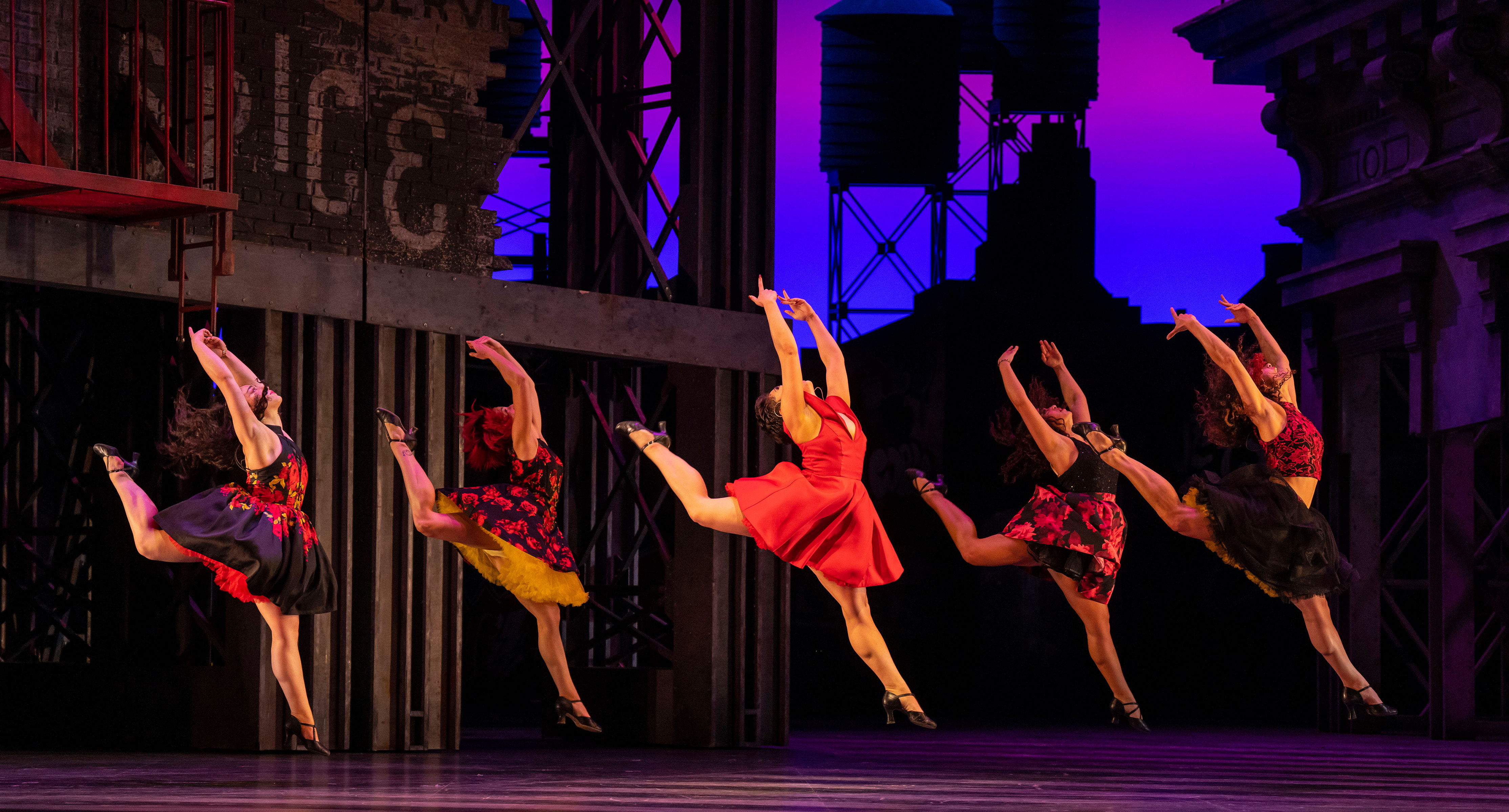
I take the liberty here of making a detour into my own story and why this work is so special to me. On reflection, I calculate that perhaps less than ten percent of the music that I perform reflects on my own experience as an American. And perhaps one percent if applied to music from and about New York City.
For me—born in the Lower East Side of Manhattan, having grown up in Queens but destined to consider the West Side my home, both literally and artistically—there is no other work like West Side Story.
Having heard it at home in the early era of long-playing records, I wore the recording through and fully absorbed it by osmosis before I had even had my first piano lessons. I was taken to see the 1961 movie under the proper supervision of my mother, my newly acquired piano teacher and my older siblings. Both wide-eyed and with ears burning, I experienced the full theatrical and shocking (especially to my teacher) power of the drama.
By the time I entered the High School of Music & Art, all of us had fully digested it. We took the subway every day to and from school, traveling through neighborhoods that would now be considered reminiscent of those we see on stage and screen. We students might not have thought about West Side Story a lot then, as by now our focus was Mozart, Beethoven, Schubert, Wagner, Brahms and Schumann (for starters), but it was our music.
Racial tolerance, which Bernstein had noted in his copy of the Shakespeare play, was also our story as young New Yorkers. We were all growing up in the cauldron of the proverbial “melting pot” where we, like metals, were to be melted down until we were refashioned into bona fide Americans.
The majority of us were children, grandchildren or great-grandchildren of immigrants. We were all mixed into the same classes, young boys and girls in love with music and art (the name of our high school): white, African American, Latino and Asian. And "white” was not monolithic. It, too, was divided (sometimes confrontationally) into Catholic, Protestant and Jewish communities.
Conversations were freely strewn, jestingly, with mock insults and racial epithets. But they were also replete with ethnic humor and less malignant forms of the racial divide. Humor was part of how we dealt with those racial and religious dynamics that defined us, in this massive port city that had welcomed the “tired, poor, huddled masses” into a city of immigrants.
We all grew up with knowledge and often firsthand experience of racism and its attendant tension. So, the Jets and Sharks were not remote for us. We had all seen gangs and the so-called “slums” as are depicted in West Side Story. And yet we New Yorkers came together, and found ourselves, despite or because of the racial mix. Tony and Maria were symbols of the spirit in which we believed and lived. I know of no other musical work, opera or musical, symphony or sonata, that captures the spirit and essence of New York City.
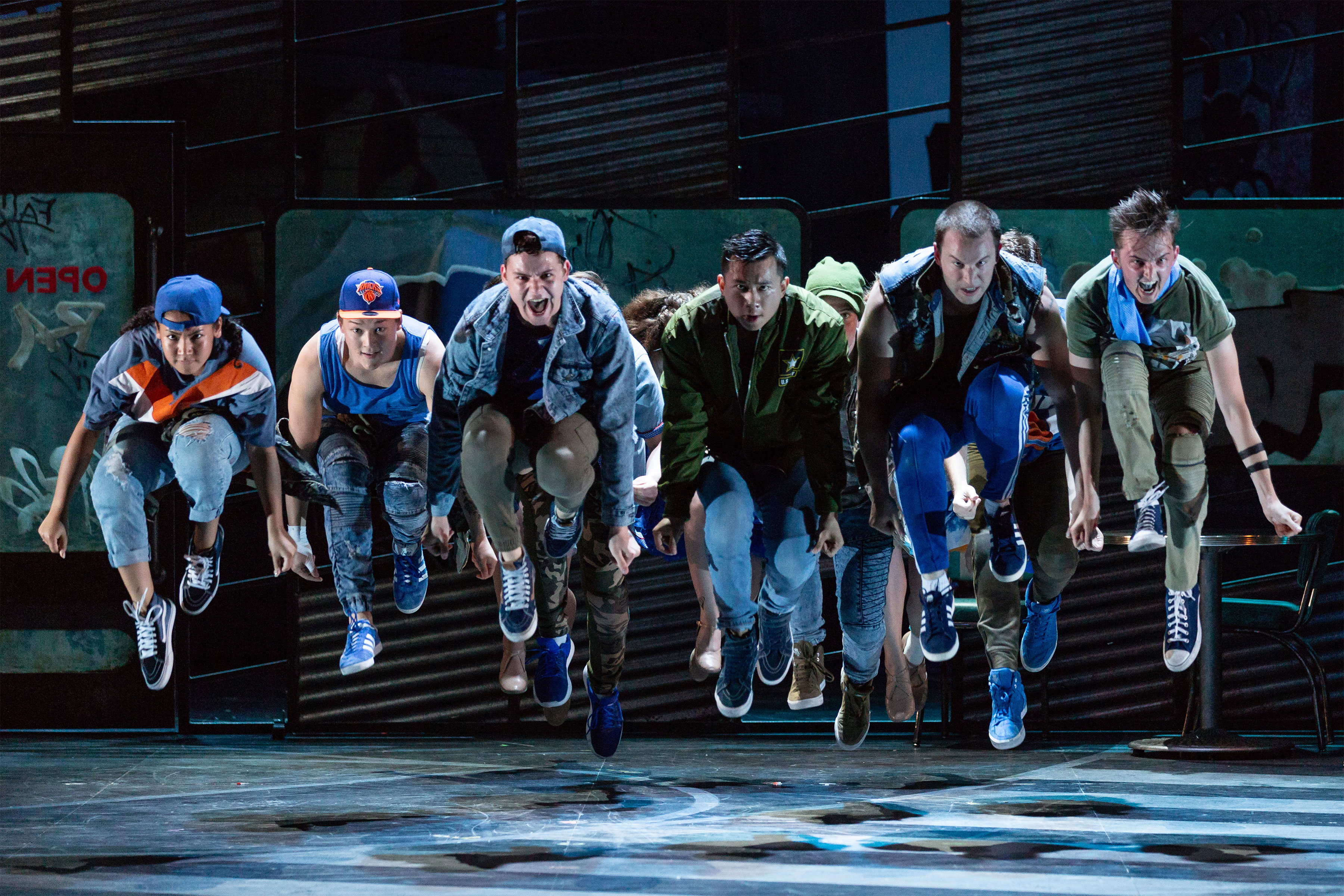
It is interesting to note West Side Story owes its first inspiration to Jerome Robbins, who wanted to choreograph a modern-day version of Romeo and Juliet. The idea was hatched as a work to be danced, Just as the first French operas were born of the ballet under the direction of Jean-Baptiste Lully at the court of Louis XIV. Bernstein had already emerged as a major force in American music, making a strong impression with the ballet Fancy Free and the musical On the Town in 1944, and his great years were yet to come.
The new work was to be entitled East Side Story, and the conflicting antagonistic families of Shakespeare were to be Catholics and Jews. Laurents (né Levine), Robbins (né Rabinowitz), Bernstein and the somewhat younger Sondheim were all Jewish. Robbins had grown up on the Upper East Side. Perhaps it started there. They were all decidedly left wing, according to Barry Seldes’ book on Bernstein political life, he was “placed “off limits” by CBS…in short black listed…was banned from official State Department functions overseas and otherwise to be treated as a loyalty and security risk.” Not least of all together with Robbins, they were both threatened with exposure of their homosexuality. A
The project didn’t progress until a meeting exactly 70 years ago (August 25 to be precise) in Beverly Hills(!). The decision was made that the antagonists would be two teenage gangs, one white, called the Jets, already settled and established with a sense of entitlement, the other, called Sharks, recently arrived Puerto Rican immigrants.There was a great migration from Puerto Rico in the 1940s that intensified after World War II, of which the authors must have been aware.
The historical veracity of all this is murky. Peter Schaffer, in his preface to Amadeus, notes that: “The playwright’s absolute obligations are clear: to obey the insistences of theater, employing Possibility and Credibility as his counselors and proudly to produce the specific electricity which he may thereby be able to conjure.”
In actuality, the newly arrived Puerto Rican community was concentrated in East Harlem (where Robbins had grown up), the Lower East Side (where I was born) and the South Bronx, not predominantly on the West Side of Manhattan.
Bernardo (a Shark) calls Tony (a Jet) a “Polack,” a politically incorrect, disparaging term in common usage for anybody descended from Poland or, more broadly and mistakenly, Ukraine and Lithuania. It sometimes was also an antisemitic code word. Perhaps this is a leftover of the original Catholic versus Jewish plot from 1949.
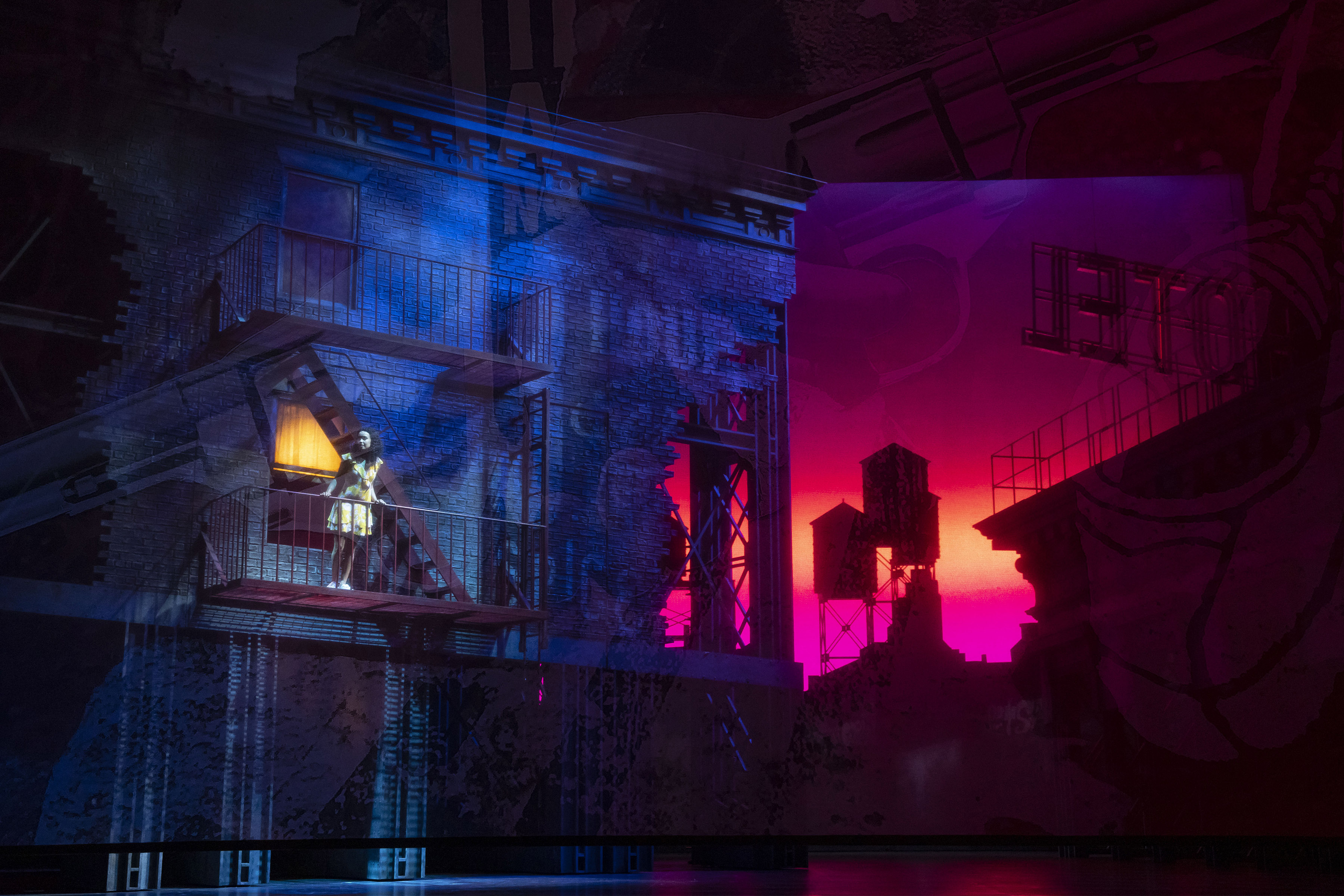
Probably the greatest gain in the new scenario was that the addition of the Puerto Rican contingent was to provide Bernstein with a vehicle to make extensive use of the Latin American spirit and dance rhythms to his pre-existing mix of jazz and his classical elements, he had a much broader palette of color with which to begin. It is not an accident that Maria’s “I had a love and it’s all in my heart” is taken directly from the “Redemption through love” motive at climactic end of Richard Wagner’s Ring cycle.
With his characteristically omnipresent rhythm and drive, Bernstein captured the incessant energy of New York, the “city that never sleeps,” with its violence, sensuality, danger, loneliness and excitement, the rumble of the subway, the clanking of iron construction, the roar of elevated subway trains overhead, the tinnitus of traffic, and the wail of police whistles and ambulance sirens.
As for Shakespearean comic relief and satire, what could top Anita and her Puerto Rican girlfriends’ “I like to be in America” and the raw hoodlum humor directed at Officer Krupke and the forces of law and order.
Bernstein and company have updated a classic tale of idealistic love, attempting to “somehow, somewhere, sometime" find a place to live their love, in an overtly hostile and troubled world. That love, willing to break through racial barriers and cultural taboos, continues to inspire.
Relevant today as always, in a world continuously endangered by tribalism, and rift with conflict, Bernstein envisioned redemption and solace in love, urging us to defy the example of Cain and Romulus and choose love over hate, harmony over discord, and compassion over violence.
Copyright © 2025, James Conlon
For further thoughts read: "Is Opera Shakespearean? Or Shakespeare Operatic?






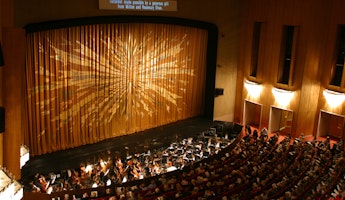

/03-cosi/_dsc0996_pr.jpg?format=auto&fit=crop&w=345&h=200&auto=format)
